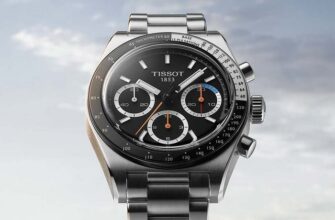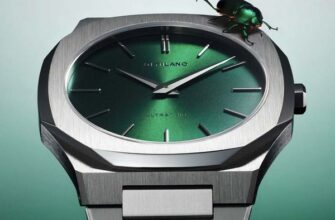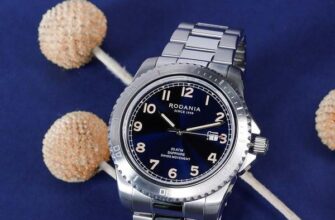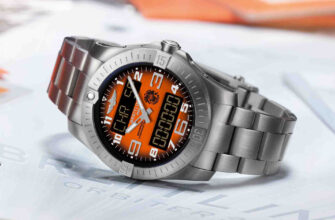One of the consequences of the laws of dialectics: if something is good, then something else is bad (or at least not very good). This position is all-encompassing! And it applies even to such a specific area as wristwatches, and even more specific - watch glasses.
Indeed, what do we want from glass? The first is that it protects the dial, which is extremely vulnerable to any external influences. That is, it would be better if the glass was extremely durable and hermetically installed. But the second is that the dial remains clearly visible. That is, it would be better if the glass was completely transparent. A clear contradiction… What do we have as a result at the moment?
Acrylic
Approximately in the middle of the twentieth century, the rapid development of applied chemistry began, all kinds of synthetic materials began to appear, and plastics were among them. And among the plastics - acrylic glass (also known as organic, hesalite, plexiglass). The basis here is a thermoplastic resin - vinyl polymer methyl methacrylate. Very inexpensive with easy mass production, they became dominant among watch glasses for a while.
Another of the undoubted advantages of acrylic glass is its mechanical properties: upon impact, it does not shatter into small sharp fragments, but rather peacefully disintegrates. This turned out to be especially important in combat conditions, in particular, in an air war. Even the caps of the aircraft cabins were made of acrylic glass: when a bullet or shrapnel hit, the danger for the crew to be “cut” was minimized.
Acrylic is still widely used in the budget segment and in sports watches. Thus, Casio installs plastic glasses in all models of its extensive Collection line, domestic Vostok watches, American Timex, Italian Diesel, Swiss Swatch are equipped with the same glasses ...
But the disadvantages of acrylic are obvious: its hardness is very low, as a result of which the glass is easy to scratch. And in general, it wears out quickly, even under the influence of such phenomena as dust flows (not to mention sand). The glass becomes cloudy, nothing is visible anymore, you will have to change it ... that's still a hassle!

Mineral glass
Mineral glass is what we are all used to, because it is what we have on our windows. The basics of production technology have been preserved since antiquity, this is the high-temperature melting of crystalline quartz. During the smelting process, silicon dioxide (in simple terms, sand) is added to the material, which increases the hardness of the glass. All the initial components are abundant in nature, everything is available, although it is more expensive to manufacture compared to plexiglass (acrylic) ... Yes, and it beats easier - into quite menacing fragments!
But it is more elegant and, as a result, again of dialectics, there is a main plus: the hardness is not low - 6,5 points on the Mohs scale (maximum, 10 points, for diamond). But still, it is not particularly high: it is clear that scratching the “mineral water” with a diamond is easier than light, but not much more difficult with other materials, up to not too hard metals, such as aluminum. True, it is polished without problems, but it’s also a whole story. Therefore, in watchmaking, the segment of the use of mineral glasses is an average price segment.
However, many good watch brands create their own improved versions of mineral glass, with a higher hardness. As a result of the hardening process, the hardness increases to 7–7,5 Mohs. These are Hardlex (Seiko), Flame Fusion Crystal (Invicta), Crystex (Jacques Lemans), Krysterna (Stuhrling) and some others.
However, it should be noted that in bright light, most types of mineral glass give glare. Here we come to the most, for today, the perfect type of watch glass.
Sapphire
The chemical composition of sapphire crystal is exactly the same as that of the natural gem of the same name. Both are a variety of corundum, a crystalline alumina. But sapphire glass is an artificial product! The initial aluminum oxide is melted, the resulting drops are precipitated along the way, they are cooled and, as a result, a single crystal is obtained - synthetic sapphire. It remains to cut it (with a diamond cutter!) into thin sheets - and the glass is ready. Why cut with a diamond? Yes, because the hardness of sapphire is as much as 9 points on the Mohs scale, only diamond takes it.
Sapphire glass is not only virtually scratch-resistant, but also extremely transparent, which is important for watches. Sometimes it seems that there is no glass above the dial at all. And if it doesn’t seem so (depending on the angle), then the sapphire crystal on the watch is simply beautiful. But flaws, dialectically, are sisters of virtues: sapphire glass is fragile, that is, it breaks easily. And yet - the glare is not much weaker than the mineral one.
But the last drawback is successfully overcome: anti-reflective coatings have been invented for this. They were invented in the famous company Carl Zeiss back in 1935, and were originally used for optics - sights, binoculars, photo and movie cameras. The essence of the method is to condense the vapors of a certain substance on the glass surface, and all this is done in a vacuum chamber. For watches, anti-glare began to be used just with the advent of sapphire crystals, and only then they were extended to mineral ones (which, of course, made them more expensive). Anti-reflective coatings are now applied to the glasses of their models by literally all luxury watch brands, many of them on both sides of the glass. Not cheap, yes. But that's why it's a luxury segment.
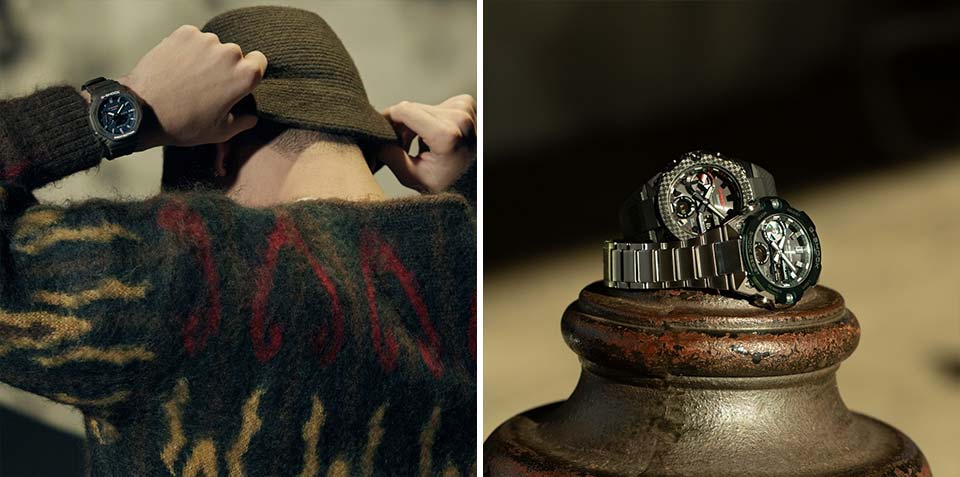
Flat or dome?
Another question is about the shape of the watch glass. All options are equal here, from flat to almost hemisphere. The choice of the manufacturer (and the consumer) depends, firstly, on the purpose of the watch and, secondly, on aesthetic preferences. For example, the overly popular Casio G-SHOCK is equipped with flat glasses, which is the most practical, and looks courageous. But on professional diving models they put convex glasses, because you need to withstand high water pressure. And some brands use literally domed glass for design reasons. These are the Bubble models ("bubble") from the company Corum.

